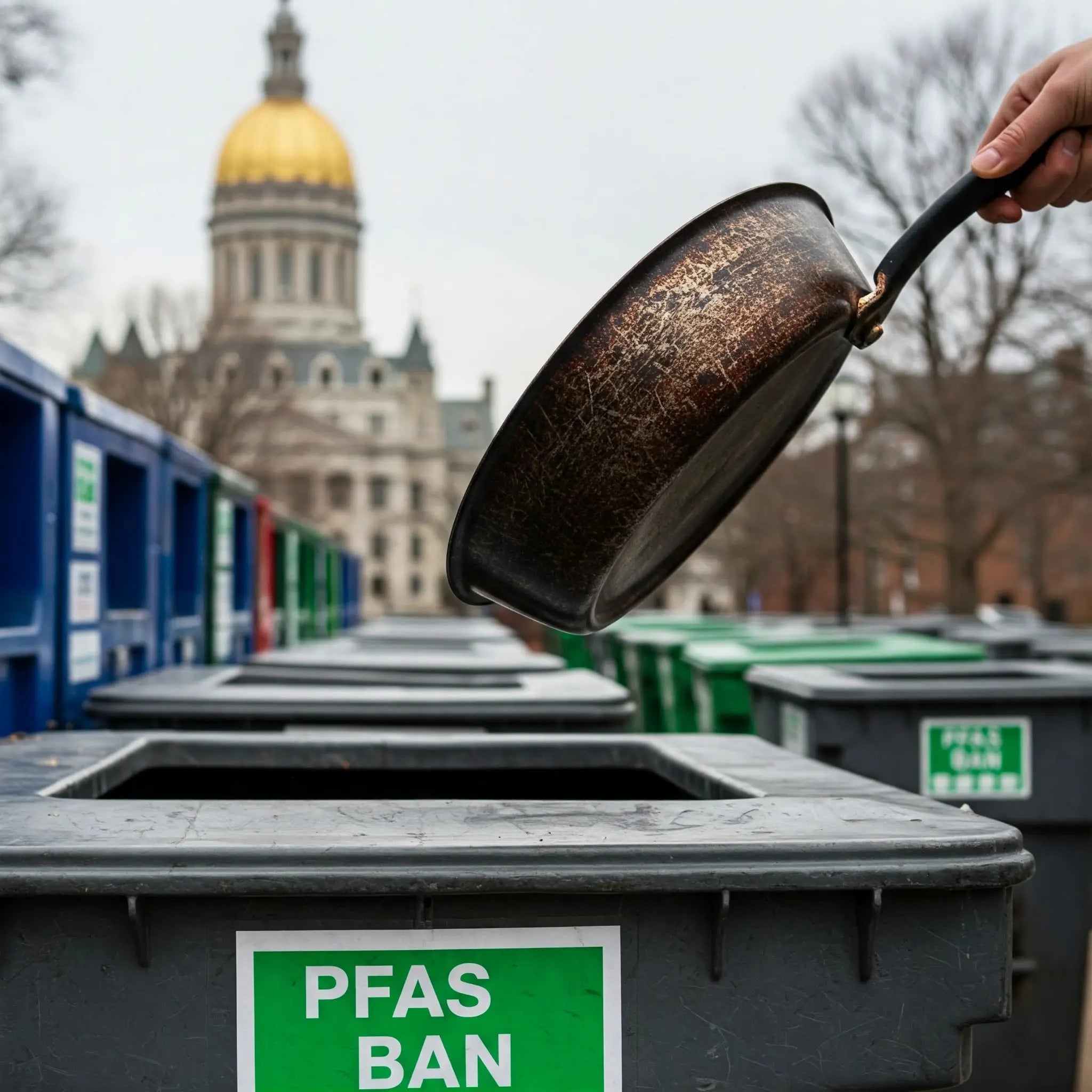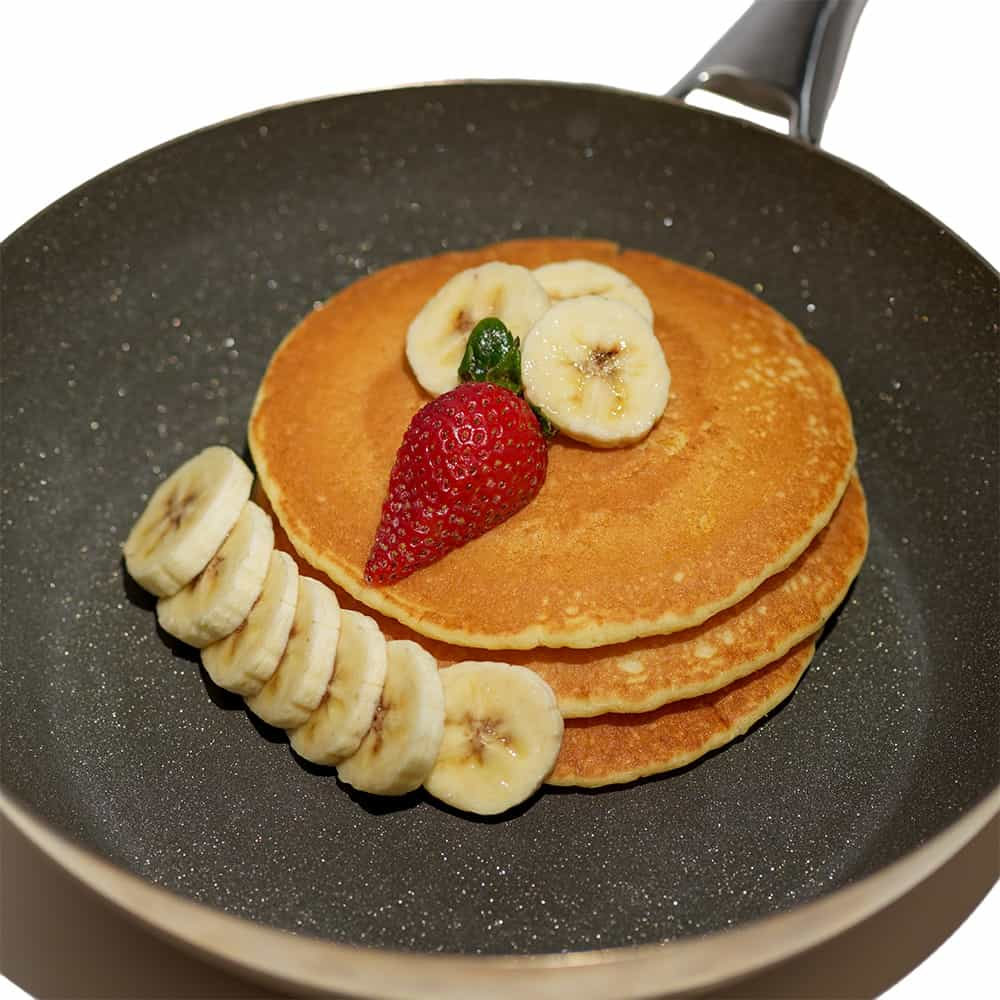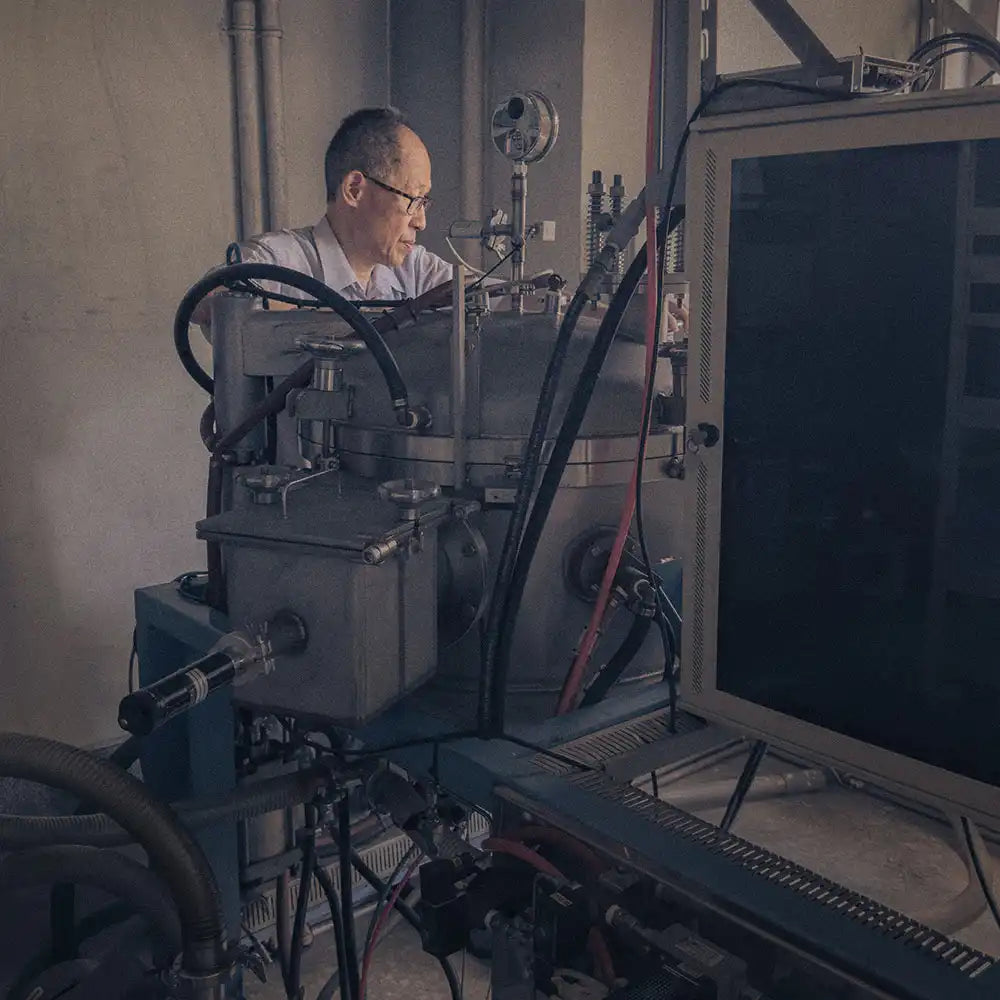
Connecticut PFAS Ban: What It Means for Your Cookware (And How to Stay Safe)
 Is your cookware hiding dangerous "forever chemicals"?
Is your cookware hiding dangerous "forever chemicals"?
Connecticut’s upcoming PFAS ban is changing the way we stock our kitchens—and for good reason. Let’s break down what this means for your pots, pans, and family’s health, plus explore the safest alternatives (spoiler: vacuum-brazed diamond cookware is stealing the spotlight).
1. Why Connecticut’s PFAS Ban Matters
“Forever chemicals” are lurking in your kitchen.
Per- and polyfluoroalkyl substances (PFAS)—the slippery chemicals behind nonstick pans and grease-resistant packaging—don’t break down in your body or the environment. Linked to cancer, thyroid issues, and immune problems, they’re as dangerous as they are persistent.
Connecticut isn’t waiting for federal action. By 2028, PFAS will be banned in most consumer products, including cookware. If you’re still using scratched nonstick pans or mystery-coated skillets, now’s the time to rethink your kitchen staples.
2. PFAS 101: Risks, Timeline, and Spotting Hidden Chemicals
Connecticut’s PFAS Phase-Out Timeline
Key Dates to Know:
- July 1, 2026: PFAS-containing cookware must be labeled “Made with PFAS.”
- January 1, 2028: All cookware with intentionally added PFAS is banned.
Why the ban? Studies show PFAS accumulate in our blood, water, and soil. Connecticut’s phased approach aims to protect both public health and the environment.
How to Spot PFAS in Your Kitchen
🛑 Red Flags:
- “Nonstick” or “Teflon” coatings (PTFE = PFAS).
- Vague labels like “PFOA-free” (other PFAS might still lurk).
- Fast-food packaging (already banned in CT since 2023).
Pro Tip: Contact manufacturers directly if labels aren’t clear. Reputable brands will confirm PFAS-free status.
Health Risks You Can’t Ignore
- Linked to kidney/testicular cancer, fertility issues, and developmental delays in children.
- PFAS leach into food when cookware is scratched.
3. The Best PFAS-Free Cookware Alternatives
✅ Safer Choices:
- Stainless Steel: Durable and oven-safe, but requires oil to prevent sticking.
- Cast Iron: Naturally nonstick when seasoned, but heavy and high-maintenance.
- Ceramic: Lightweight and PFAS-free, but coatings can wear off within years.
⚠️ The Catch: While these options avoid PFAS, they often sacrifice convenience. (Ever tried flipping eggs in stainless steel?)
4. Why Vacuum-Brazed Diamond Cookware is a Game-Changer
Meet the PFAS-Free Upgrade Your Kitchen Deserves
Key Benefits
- Zero PFAS, Forever Chemicals, or PTFE: Just pure diamond and metal.
- Superior Heat Distribution: Diamonds conduct heat 5x better than copper—no hot spots.
-
Built to Last: Vacuum-brazing bonds diamonds permanently to the surface (no flaking, ever).

Diamond Cookware vs. The Rest
| Feature | Vacuum-Brazed Diamond | Ceramic | Cast Iron |
|---|---|---|---|
| Nonstick Performance | Yes | Yes | Requires seasoning |
| Durability | Lifetime | 1-2 yrs | Lifetime |
| Weight | Medium | Light | Heavy |
| PFAS-Free | Yes | Yes | Yes |
Key Insight: Diamond-infused pans (where particles are mixed into coatings) aren’t the same. Only vacuum-brazed diamonds offer permanent, PFAS-free performance.
5. FAQs: Your Top PFAS Questions Answered
Q: When does the PFAS ban take effect for cookware?
A: All cookware with intentionally added PFAS will be banned in Connecticut by January 1, 2028. Labels will warn of PFAS starting July 2026.
Q: Can I still use my scratched nonstick pan?
A: Toss it. Scratches increase PFAS leaching. Switch to safer options like diamond or stainless steel.
Reference
- Per- and Polyfluoroalkyl Substances (PFAS) - CT DEEP
- Introduction to Per- and Polyfluoroalkyl Substances (PFAS) - CT DEEP
- PFAS Information for Environmental Professionals - CT DEEP
- Per- and Polyfluoroalkyl Substances (PFAS) - CT DPH
- Connecticut-Regulated Waste - CT DEEP
- $2 million study proposed to put PFAS regulatory confusion to bed - Connecticut Inside Investigator
- PFAS in Cookware: Safer Kitchen Choices for Healthier Living - Consumer Notice
- Undisclosed PFAS coatings common on cookware, research shows - Ecology Center
- Connecticut's 'Intentionally Added' PFAS Food Packaging Ban Now Effective - CBIA
- Connecticut Bans PFAS in Consumer, Safety, Agricultural Products - CBIA
- Massachusetts and Connecticut ban PFAS from firefighting gear - EHN
- AN ACT CONCERNING THE USE OF PFAS IN CERTAIN PRODUCTS. - Connecticut General Assembly
- Connecticut Expands Ban on PFAS Products Across Multiple Industries | NEWS - ChemRadar
- Diamond Non-stick Surface and Cooking Utensils - USPTO
- Why Diamonds Are Naturally Nonstick? - diamondPans
- How to Choose Diamond Cookware: Carat Weight Matters Most - diamondPans
- What are PFAS and Why Should People Choose PFAS-Free Cookware? - diamondPans
- PFAS-Free Diamond Cookware: The Comprehensive Nonstick Guide for American Home Cooks - diamondPans
- Is Diamond Coating the Same as Teflon? What Is Diamond Coating on Pans? - diamondPans
- What Is Diamond Coating on Pans & Is It Safe? - diamondPans


